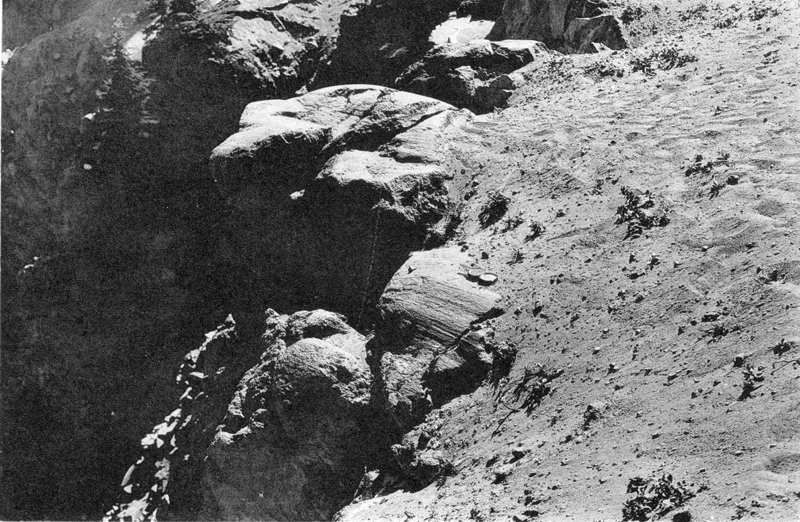The Geology of Crater Lake National Park, Oregon With a reconnaissance of the Cascade Range southward to Mount Shasta by Howell Williams
The Glaciation of Mount Mazama
THE geologist who visits Crater Lake cannot fail to see at once abundant signs of glaciation on every side. If he approaches from the south, his attention is drawn during the last 2 miles of the journey to the fresh moraines through which the road makes its tortuous way. Arriving at the crater rim, he soon finds striated pavements of lava on the very brink of the cliffs (see plate 22, figure I), and as his eye follows the rim to the southeast he sees two spectacular U-shaped notches, one at the head of Kerr Valley and the other at the head of Sun Valley. These are obviously cross sections of deep glacial troughs. If then he turns toward the western wall of the caldera, he is prepared to guess that the great lava flow of Llao Rock occupies yet another glacial valley, for its base has the unmistakable form of a river channel modified by the passage of ice.
|
Plate 22. Fig. 1. Typical glacial striae on the caldera rim near Discovery Point. The overlying deposits are of pumice charged with lithic fragments. (Photograph by George Grant, National Park Service.) |
Such are the most obvious indications of glaciation on Mount Mazama. Closer inspection shows not only that glaciers once spread far beyond the limits of the park, but that they must have existed on the flanks of the growing cone at an early stage, for glacial moraines are interbedded with the oldest lavas on the caldera walls. The building of Mazama took place almost entirely during Pleistocene time, and throughout much of its history the cone was covered by ice. It is of course impossible to unravel the stages of advance and retreat of the earlier glaciers, since their deposits can only be seen in cross section on the caldera walls. All that can be said is that from time to time, both in response to climatic changes and as a result of volcanic activity, the glaciers were partly or wholly destroyed and then readvanced.
***previous*** — ***next***


